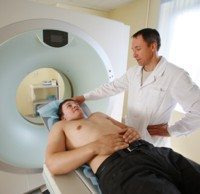Low-Dose CT May Improve Mesothelioma Survival Odds for German Workers
 Germany is leading the way in the fight to detect asbestos-related diseases like mesothelioma earlier in exposed workers.
Germany is leading the way in the fight to detect asbestos-related diseases like mesothelioma earlier in exposed workers.
Based on studies showing the early warning benefits of low dose CT scanning in smokers, Germany’s statutory accident insurance now covers these special exams for high risk asbestos workers.
Asbestos and Mesothelioma Risk
Asbestos is a naturally-occurring mineral that was widely used for decades to strengthen and improve the fire resistance of a variety of building products.
But after people who worked around asbestos began to contract lung cancer and a rare membrane cancer called malignant mesothelioma, many countries stopped using it. Today, asbestos exposure is widely-recognized as the leading cause of mesothelioma. Germany banned asbestos in 1993.
Unfortunately, because of the cancer’s long latency period, many German workers exposed to asbestos prior to the ban are just now being diagnosed with pleural or peritoneal mesothelioma.
Improving Mesothelioma Survival
Although there is no cure for mesothelioma, survival is highest in people whose disease is recognized early. So far, researchers have found no reliable screening method for early detection of mesothelioma.
But asbestos-exposed workers in Germany may finally have an option that could improve their odds, thanks to the National Lung Screening Trial. That study showed for the first time that using low-dose CT to examine heavy smokers can significantly reduce the number of lung cancer deaths.
According to a new article in a German radiology journal, “These results in association with the recommendations of international medical societies and organizations were pivotal as the German statutory accident insurance (DGUV) decided to provide LDCT as a special occupational medical examination for workers previously exposed to asbestos and with a particularly high risk for developing lung cancer.”
Medical studies have found that smoking compounds lung cancer and mesothelioma risk in people exposed to asbestos. Under the plan, these workers and others at higher risk for lung cancer can access LDCT for early detection.
An estimated 2,500 Americans are diagnosed with mesothelioma each year. Most of them were exposed to asbestos on the job and most have no symptoms of mesothelioma until the disease is in its later stages.
Source:
Hofmann-Preiss, K and Rehbock, B, “Early recognition of lung cancer in workers occupationally exposed to asbestos”, August 8, 2016, Radiologe, Epub ahead of print





